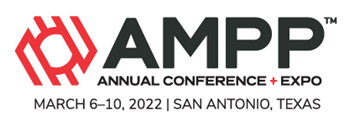Search
Products tagged with 'maintenance'
View as
Sort by
Display
per page
Analysis of leak repair testing requirements in ASME PCC-2 and ISO 24817
Product Number:
51323-18934-SG
Publication Date:
2023
$20.00
Atmospheric Environment Severity Monitoring for Corrosion Management
Product Number:
51323-19464-SG
Publication Date:
2023
$20.00
Best Practices for Maintenance of Abrasive Blasting Equipment
Product Number:
41206-239-SG
Publication Date:
2006
$20.00
Bridge Coating in Japan: Doing it Right the First Time
Product Number:
41213-737-SG
Publication Date:
2013
$20.00
CAPITAL IMPROVEMENTS PROGRAM (CIP) FOR WATER STORAGE FACILITIES
Product Number:
51218-094-SG
Publication Date:
2018
$20.00
Cathodic Protection (CP) System at Gas Wells Maintenance and Troubleshooting
Product Number:
MPWT19-14286
Publication Date:
2019
$0.00
Cathodic Protection Monitoring In Water And Wastewater Systems
Product Number:
51322-17655-SG
Publication Date:
2022
$20.00
Datascience To Enhance Pipeline Maintenance
Product Number:
51322-17508-SG
Publication Date:
2022
$20.00
Developing and Managing a Coatings & Linings Program in an Electric Utility
Product Number:
51317--8812-SG
ISBN:
8812 2017 CP
Publication Date:
2017
$20.00
Extending Asset Lifecycle With Inspections And Maintenance
Product Number:
51322-18143-SG
Publication Date:
2022
$20.00












